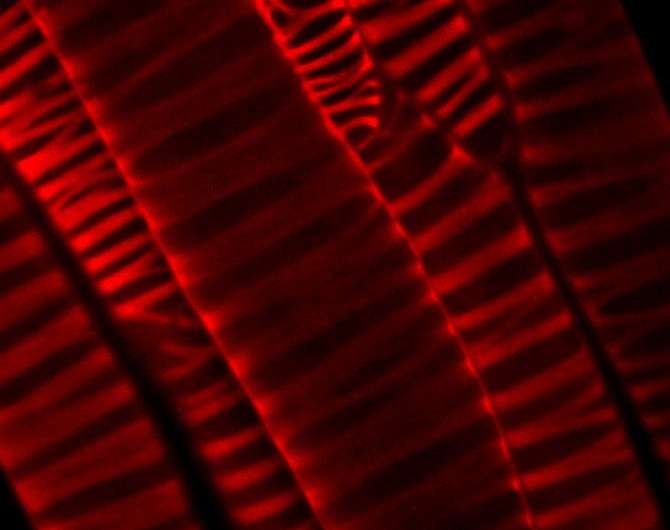Researchers create inside-out plants to watch how cellulose forms

Researchers have been able to watch the interior cells of a plant synthesize cellulose for the first time by tricking the cells into growing on the plant's surface.
"The bulk of the world's cellulose is produced within the thickened secondary cell walls of tissues hidden inside the plant body," says University of British Columbia Botany PhD candidate Yoichiro Watanabe, lead author of the paper published this week in Science.
"So we've never been able to image the cells in high resolution as they produce this all-important biological material inside living plants."
Cellulose, the structural component of cell walls that enables plants to stay upright, is the most abundant biopolymer on earth. It's a critical resource for pulp and paper, textiles, building materials, and renewable biofuels.
"In order to be structurally sound, plants have to lay down their secondary cell walls very quickly once the plant has stopped growing, like a layer of concrete with rebar," says UBC botanist Lacey Samuels, one of the senior authors on the paper.
"Based on our study, it appears plant cells need both a high density of the enzymes that create cellulose, and their rapid movement across the cell surface, to make this happen so quickly."
This work, the culmination of years of research by four UBC graduate students supervised by UBC Forestry researcher Shawn Mansfield and Samuels, was facilitated by a collaboration with the Nara Institute of Technology in Japan to create the special plant lines, and researchers at the Carnegie Institution for Science at Stanford University to conduct the live cell imaging.
"This is a major step forward in our understanding of how plants synthesize their walls, specifically cellulose," says Mansfield. "It could have significant implications for the way plants are bred or selected for improved or altered cellulose ultrastructural traits - which could impact industries ranging from cellulose nanocrystals to toiletries to structural building products."
The researchers used a modified line of Arabidopsis thaliana, a small flowering plant related to cabbage and mustard, to conduct the experiment. The resulting plants look exactly like their non-modified parents, until they are triggered to make secondary cell walls on their exterior.
More information: "Visualization of cellulose synthases in Arabidopsis secondary cell walls", Science, www.sciencemag.org/lookup/doi/ … 1126/science.aac7446
Journal information: Science
Provided by University of British Columbia



















